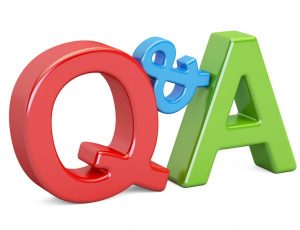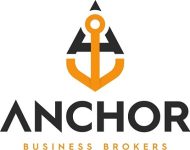This is based on a guide sent out from Senator Ben Cardin, Ranking Member – U.S. Senate Committee on Small Business & Entrepreneurship.
Other than the SBA COVID-19 ECONOMIC INJURY DISASTER LOAN the CARES act provides for the following funding/loan programs:
- Capital to cover the cost of retaining employees. Then the Paycheck Protection Program might be right for you.
- A quick infusion of a smaller amount of cash to cover you right now. You might want to look into an Emergency Economic Injury Grant (SBA ECONOMIC INJURY DISASTER LOAN – below).
- To ease your fears about keeping up with payments on your current or potential SBA loan? The Small Business Debt Relief Program could help.
Before discussing the above, let’s review the SBA ECONOMIC INJURY DISASTER LOAN. The following is an overview:
- Loans may be made in an amount of up to $2,000,000 per borrower.
- Loans carry an interest rate of 3.75% (2.75% for non-profit organizations).
- Loans are payable over a term of up to 30 years.
- Proceeds of the loans may be used to pay existing fixed debt, employee payroll, accounts payable and other expenses of operation.
- Loans typically take 14-20 days to fund but the SBA is working to shorten that timeframe.
- Collateral is required for all loans over $25,000, which may include real estate. SBA has said it will not decline a loan for lack of collateral but will require the borrower to pledge collateral that is available.
- Loans cannot be used to refinance long term debt.
- Qualification for relief is available only to small businesses which SBA determines are unable to obtain credit elsewhere. Determining what is a small business is dependent on various revenue and employee considerations and the industry.
Besides the general loan application, businesses (non-profits – will not be covered here) will need to provide:
- Tax Information Authorization (IRS Form 4506-T), completed and signed by each applicant, each principal owning 20 percent or more of the applicant business, each general partner or managing member and, for any owner who has greater than 50 percent ownership in an affiliate business. Affiliates include, but are not limited to, business parents, subsidiaries, and/or other businesses with common ownership or management.
- Complete copies, including all schedules, of the most recent federal income tax returns for the applicant business, or an explanation if not available.
- Personal Financial Statement (SBA Form 413) completed, signed, and dated by the applicant, each principal owning 20 percent or more of the applicant business, and each general partner or managing member.
- Schedule of Liabilities listing all fixed debts (SBA Form 2202).
Paycheck Protection Program (PPP) Loans
The program would provide cash-flow assistance through 100 percent federally guaranteed loans to employers who maintain their payroll during this emergency. If employers maintain their payroll, the loans would be forgiven. PPP has a host of attractive features, such as forgiveness of up to 8 weeks of payroll based on employee retention and salary levels, no SBA fees, and at least six months of deferral with maximum deferrals of up to a year. Small businesses and other eligible entities will be able to apply if they were harmed by COVID-19 between February 15, 2020 and June 30, 2020. This program would be retroactive to February 15, 2020, in order to help bring workers who may have already been laid off back onto payrolls. Loans are available through June 30, 2020. The loan term, interest rate, and fees for any amounts not forgiven are: 1) the maximum term is 10 years, 2) the maximum interest rate is 4 percent & 3) zero loan fees, & zero prepayment fee (SBA will establish application fees caps for lenders that charge).
Entities are eligible for a PPP loan:
- Businesses and entities must have been in operation on February 15, 2020.
- Small business concerns, as well as any business concern (non-profits and other forms not covered here) that has fewer than 500 employees, or the applicable size standard in number of employees for the North American Industry Classification System (NAICS) industry as provided by SBA, if higher.
- Individuals who operate a sole proprietorship or as an independent contractor and eligible self-employed individuals.
- Any business concern that employs not more than 500 employees per physical location of the business concern and that is assigned a NAICS code beginning with 72, for which the affiliation rules are waived.
- Affiliation rules are also waived for any business concern operating as a franchise that is assigned a franchise identifier code by the Administration, and company that receives funding through a Small Business Investment Company.
How is the loan size determined?
Depending on your business’s situation, the loan size will be calculated in different ways (see below). The maximum loan size is always $10 million.
- If you were in business February 15, 2019 – June 30, 2019: Your max loan is equal to 250 percent of your average monthly payroll costs during that time period. If your business employs seasonal workers, you can opt to choose March 1, 2019 as your time period start date.
- If you were not in business between February 15, 2019 – June 30, 2019: Your max loan is equal to 250 percent of your average monthly payroll costs between January 1, 2020 and February 29, 2020.
- If you took out an Economic Injury Disaster Loan (EIDL) between February 15, 2020 and June 30, 2020 and you want to refinance that loan into a PPP loan, you would add the outstanding loan amount to the payroll sum.
What costs are eligible for payroll?
- Compensation (salary, wage, commission, or similar compensation, payment of cash tip or equivalent)
- Payment for vacation, parental, family, medical, or sick leave
- Allowance for dismissal or separation
- Payment required for the provisions of group health care benefits, including insurance premiums
- Payment of any retirement benefit
- Payment of State or local tax assessed on the compensation of employees.
However, the following expenses are not eligible:
- Employee/owner compensation over $100,000
- Compensation of employees whose principal place of residence is outside of the U.S.
- Qualified sick and family leave for which a credit is allowed under sections 7001 and 7003 of the Families First Coronavirus Response Act
- Taxes imposed or withheld under chapters 21, 22, and 24 of the IRS code.
How is the forgiveness amount calculated? Forgiveness is equal to the sum of the following payroll costs incurred during the covered 8-week period compared to the previous year or time period, proportionate to maintaining employees and wages (excluding compensation over $100,000). This includes the Payroll costs plus any payment of interest on any covered mortgage obligation (not including any prepayment or payment of principal on a covered mortgage obligation) plus any payment on any covered rent obligation plus and any covered utility payment.
To get forgiveness on my PPP loan you will need to apply through your lender for forgiveness on your loan. In this application, will need to include:
- Documentation verifying the number of employees on payroll and pay rates, including IRS payroll tax filings and State income, payroll and unemployment insurance filings.
- Documentation verifying payments on covered mortgage obligations, lease obligations, and utilities. (More information needs to be provided on what is covered.)
- Certification from a representative of your business or organization that is authorized to certify that the documentation provided is true and that the amount that is being forgiven was used in accordance with the program’s guidelines for use. (You got to love government speak – as I understand it you will need to attest to the fact that you – the business – spent the money as intended and appropriately.)
Any loan amounts not forgiven are carried forward as an ongoing loan with max terms of 10 years, at a maximum interest rate of 4%. Principal and interest will continue to be deferred, for a total of 6 months to a year after disbursement of the loan. The clock does not start again. Once you get the PPP loan you can’t go and ask for more.
Borrowers may apply for PPP loans and other SBA financial assistance, including Economic Injury Disaster Loans (EIDLs), 7(a) loans, 504 loans, and microloans, and also receive investment capital from Small Business Investment Corporations (SBICs). However, you cannot use your PPP loan for the same purpose as your other SBA loan(s). For example, if you use your PPP to cover payroll for the 8-week covered period, you cannot use a different SBA loan product for payroll for those same costs in that period, although you could use it for payroll not during that period or for different workers. Simply put not double dipping.
Small Business Debt Relief Program
This program will provide immediate relief to small businesses with non-disaster SBA loans, in particular 7(a), 504, and microloans. Under it, SBA will cover all loan payments on these SBA loans, including principal, interest, and fees, for six months. This relief will also be available to new borrowers who take out loans within six months of the President signing the bill into law.
The SBA loans that are eligible for debt relief are 7(a) loans not made under the Paycheck Protection Program (PPP), 504 loans, and microloans. In addition, Disaster loans are not eligible. This loan is based on SBA 7(a) loans. These loans are up to $5 million for borrowers who lack credit elsewhere and need access to versatile financing. They provide short-term or long-term working capital and to purchase an existing business, refinance current business debt, or purchase furniture, fixtures and supplies. In the program, banks share a portion of the risk of the loan with SBA. There are many different types of 7(a) loans. While not specified in the Guide, it is my understanding that the rate for these loans are at 4% and are for a term of 7 years.
I have spoken with several lenders today (3/30/2020) and they have no information on how to implement these programs. They feel that will have instructions from the SBA by the end of the week.



